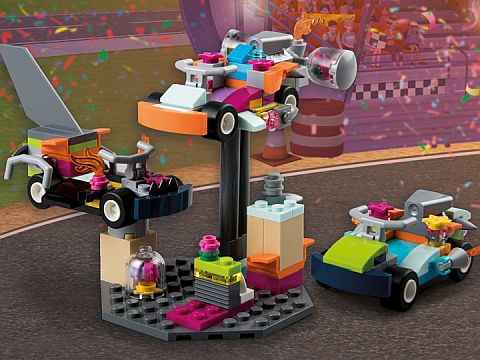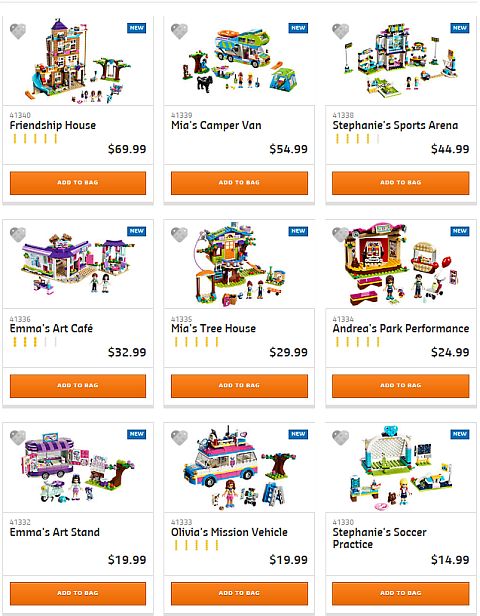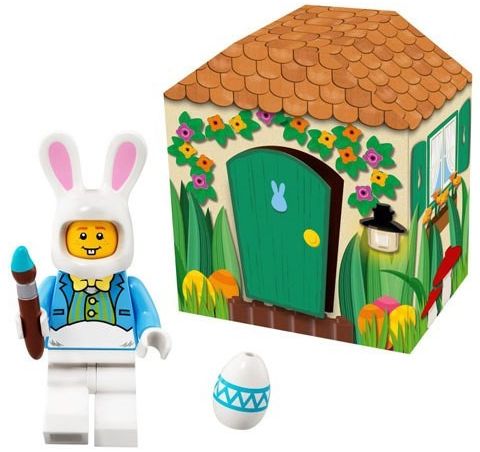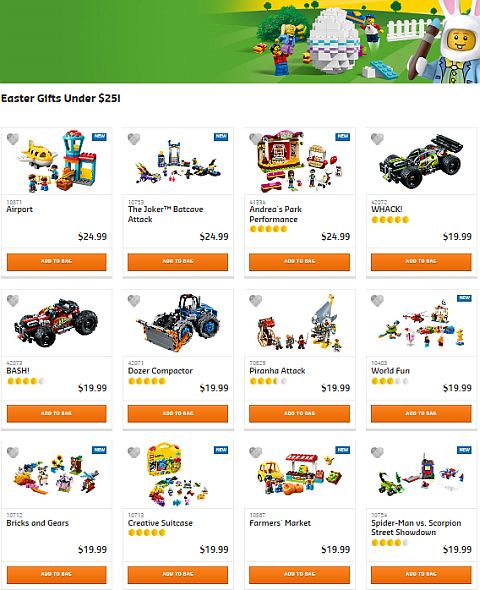There is a new contest on ReBrick for teen and adult fans of LEGO Friends with a fun challenge and amazing prizes. This challenge is a tie-in with the upcoming LEGO Friends racing sub-theme that will be released in the summer. Details below. 🙂

➡ LEGO FRIENDS CONTEST – OVERVIEW: It’s race day in Heartlake City, and the girls need your help to build the most incredible Go-Kart racing scene ever! Capture the spirit of LEGO Friends and racing, with a Go-Kart vignette full of action and fun. For the purpose of this contest, a racing scene or vignette means a small model showing your Go-Kart, as well as some surrounding action, such as LEGO Friends characters preparing for the race, trees, street, part of a race track, traffic signs – you name it! Just make sure your racing scene fits on a baseplate of 8×12 studs. See the picture below for inspiration on what kind of Go-Kart to make!

➡ LEGO FRIENDS CONTEST – HOW TO ENTER: Build your LEGO Friends Go-Kart racing vignette according to the rules mentioned below. Take up to five photos of your creation and submit them to the contest. Make sure to show off all angles of your creation. Use the description field to describe your entry– then hit “submit”. When you receive a “Success!” pop-up notification after clicking “submit” on the entry submission page, your entry has successfully been submitted. The ReBrick moderation team will review it within 1-3 working days to make sure it fits all the contest rules.
➡ LEGO FRIENDS CONTEST – RULES: Your racing scene should be no more than 8×12 studs in size at the base. Some elements can overhang, but no part of the base may exceed this size. You can however build smaller models. Your entry should fit within the Heartlake City universe. Entries should contain a Go-Kart. Entries should relate to LEGO Friends but otherwise not relate to or include any third party IPs. This means all entries containing third party IPs that do not relate to LEGO Friends, including licensed characters from Marvel and DC superheroes, Star Wars, Harry Potter, etc. will not be eligible for the contest. This also includes LEGO IPs such as LEGO Ninjago, LEGO Elves etc. Entries must not include LEGO minifigures, but you can use any LEGO Friends minidolls. Entries can be previously built, but cannot be submitted previously in any contest of any kind competing for a prize. Each entry must have been made by the user submitting it. This contest is open to LEGO Digital Designer (LDD) entries, however, make sure your images don’t show the baseplate from Build Mode. To do this, within View Mode use CTRL+K (CMD+K on Mac) to generate a transparent PNG image and save it to a white background. You can also use an LDD background, so long as the baseplate from Build Mode isn’t visible. Entries must not contain LEGO elements which have been modified from their original form, including painted or cut elements. Entrants must be at least 13 years of age at the time of entry. You can read the rest of the entry guidelines and rules here.
➡ LEGO FRIENDS CONTEST – DEADLINE: You must submit your entry by May 2nd, 2018 at 10:00 AM EST. If you are not sure what time zone you are in, you can use an online time-zone converter to make sure you don’t miss the deadline.
➡ LEGO FRIENDS CONTEST – JUDGES: A panel of judges from the LEGO Friends team will select one grand prize winner and two runner up winners. They will judge entries upon: the originality of the build (e.g. interesting use of elements) – 25%, relevance to contest theme – 25%, humor and fun in the model – 25%, the coolness of the vehicle, delivering a wow-effect – 25%.

➡ LEGO FRIENDS CONTEST – PRIZES: There will be one grand prize winner, who will receive the following: A collection of 12 upcoming LEGO Friends sets, shipped once they’ve available, valued at $430 USD, your choice of $600 USD worth of items from the Online LEGO Shop, and a trophy designed by a LEGO Friends designer (note: trophy may appear different than the one pictured). There will be two runners-ups, who will receive the following: Four upcoming LEGO Friends racing sets, shipped once they’ve available, valued at $150 USD, your choice of $200 USD worth of items from the Online LEGO Shop.
➡ LEGO FRIENDS CONTEST – WINNERS ANNOUNCEMENT: Winners will be contacted on the email address associated with their LEGO ID account after May 10th, 2018 and announced on ReBrick when the winners returned the signed Winner’s Certification Documents. A winner who does not return their Winner’s Certification Document within one week (5 days) of receiving it will be disqualified, and a new winner will be selected.

It’s great to see a LEGO Friends contest with a fun theme! You can use some awesome colors, cute puppies, interesting designs, and whatever else you can imagine! LEGO Friends is truly a theme where you don’t have to limit yourself to certain design, color, and theme choices. If you would like some ideas and inspiration, you might want to take a look at the currently available LEGO Friends sets at the Online LEGO Shop.

What do you think? Are you planning to enter this LEGO Friends contest? Do you have some ideas already for an awesome LEGO Friends-themed Go-Kart? Feel free to share in the comment section below! 😉
And you might also like to check out the following related posts:


















